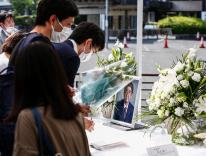Correction
I was surprised by a historical error in Margaret O’Brien Steinfels’s otherwise insightful column on the illogical and emotional causes of war, “Why We Fight” (September 12). She writes that Russia lost Ukraine after World War I, and then regained it after World War II. It is true that following the Russian Revolution in 1917 Ukraine was momentarily independent of the Russian Empire. But that independence was short-lived. By 1919, the Russians under Lenin regained control. Except for the period of occupation by the Germans during World War ll, Ukraine remained under Russian control until the collapse of the Soviet Union in 1991.
I am particularly aware of this moment in history because I took a course in Slavic history from Professor Roman Smal-Stotsky while I was a student at Marquette University. During Ukraine’s brief interval of independence from 1917 to 1919, Smal-Stotsky had served as vice-premier of the Ukrainian Republic. In 1919, he fled the Soviets to Poland, where he taught at the University of Warsaw, only to flee the Germans again in 1939, ending up in Milwaukee.
Paul J. Schaefer
Clinton Corners, N.Y.
The author replies
My source was Margaret MacMillan’s Paris 1919. Looking at the text again, I see that Ukraine’s independence was indeed short-lived and that, after fierce fighting, Poland and the Soviet Union divided the country under the Treaty of Riga, signed March 18, 1921.
Margaret O’Brien Steinfels
Rigged
After reading Molly Farneth’s article “At Rome’s Mercy” and John Wilkins’s article “Great Expectations: Pope Francis & the Synod on the Family” (September 26), I came away with a very pessimistic view of the upcoming synod on family life. I drew a parallel between the American justice system and the structure of the synod.
Many observers of the American justice system realize that the outcome of some trials are determined from the outset after jury selection. When jury selection is done badly, the results of the trial can be blatantly unjust. An obvious example of this injustice was the Mississippi trial in the 1950s of the three white men accused of murdering a sixteen-year-old black boy from Chicago named Emmett Till. The all-white jury acquitted the accused—a decision that could not be reversed, even though the three men later admitted to killing Till. Once twelve white jury members were chosen to decide the fate of the three white men accused of murdering a black boy in 1950s America, the outcome of the trial was a foregone conclusion.
I fear the outcomes of the synod on the family are similarly predetermined because of the structure of the synod itself.
The Catholic Church continues to have a hierarchical structure in which the members of the jury, those deciding the outcome, are all celibate men with no experience of being married with children in the modern world, and no firsthand experience of the attendant problems and moral dilemmas. The first meeting consists of members of the hierarchy and a few lay “observers.” Next year’s meeting is supposed to include broader representation of the faithful. We’ll see.
But given this structuring of the synod, I doubt that there are enough members of the hierarchy who have the empathy and compassion of a prelate like Cardinal Walter Kasper to effect any significant change in the church’s laws or practice regarding marriage and family life. I hope I am wrong and that the Holy Spirit will somehow guide the decision-makers at the synod to devise laws and practices that are fairer and more in touch with the issues facing married couples today.
Thomas Severin
Connellsville, Penn.
A pattern, not a people
The essay by Molly Farneth is a very helpful reflection on power, authority, and the need for a structural reform of the Catholic Church. She makes use of the fine writing of Mary Douglas, who provided a defense of the idea of hierarchy from an anthropologist’s point of view. I would like to suggest a conclusion to Farneth’s essay, which she might agree with. That conclusion is that so long as the bishops are called “the hierarchy” there is no possibility of even raising a question of church reform. It is impossible to propose a different image of hierarchy if one group of people is called “the hierarchy.” The Catholic Church taught the modern world to use the word “hierarchy,” but we seem to have forgotten that hierarchy is an institutional pattern, not a group of people. Farneth cites an essay by Douglas that was titled “A Modest Proposal: A Place for Women in the Hierarchy” (June 14, 1996), even though Douglas was not proposing the ordination of women. On March 5, 2014, a New York Times story claimed that Pope Francis “said that women must have a greater presence in the church hierarchy,” which implied that he had changed either his view of women’s ordination or the meaning of hierarchy. What he actually said was that “women should play a greater role in decision-making,” which means little in a hierarchical church that has a group of people called “the hierarchy.”
Gabriel Moran
New York, N.Y.
Please email comments to [email protected] and join the conversation on our Facebook page.
Share
Previous Story
Synod day 5 presser. (UPDATED)
Next Story
Last Word: A Job, Not a Career


